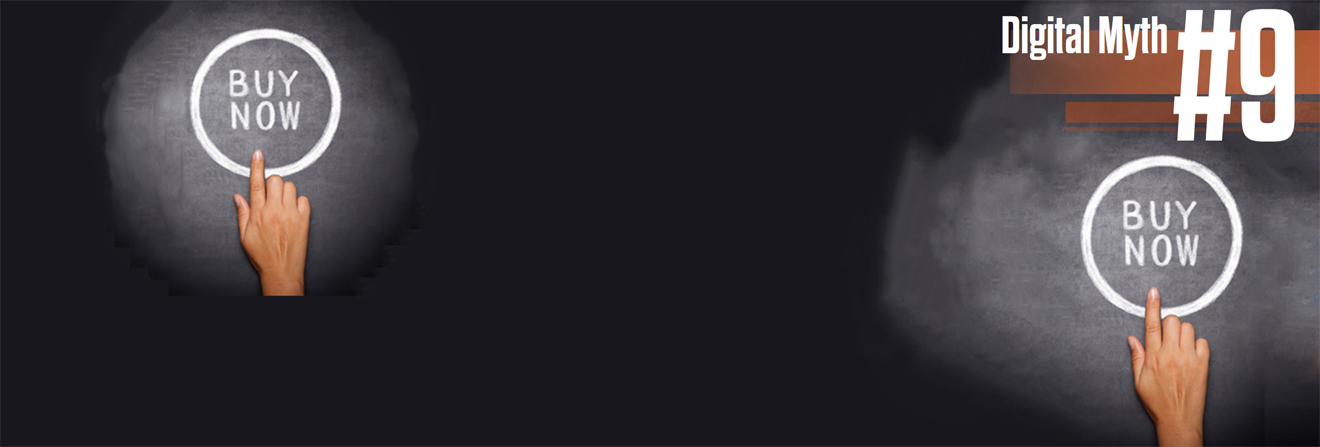Digital Myths: #9 – Competition is only one click away, except nobody actually clicks.
A popular case against online regulation is that the Internet is such a perfect marketplace that competition takes care of that, never mind what was said in Myth #8 about Silicon Valley’s appetite for monopolies. The idea is that because competition online is not limited by such things as geography and expensive machinery, as in the physical markets, the marketplace is fair and the consumer always gets what they want. The prime example of this is MySpace, the music network that used to be top dog in social media, now a shadow of its former self. So could Facebook, Amazon or Google meet with the same fate? And is that really a case against competition action?
Take Facebook: can you really opt out? With billions of users, an ambition to connect everyone in the world and a strategy of buying new competitors, can you not be on Facebook? It’s no longer a social media in the strict sense; all kinds of work and business happen there: employers evaluate candidates, inter-company work groups set up for particular issues, and products are marketed not only through the ads but through the users themselves. So it can be convenient and great in many ways, but when is the price for not being on board too high? Is the choice really yours anymore?
Or take Amazon, the mail order behemoth that is worth close to US$300 billion, more than the GDP of several European countries. Can anyone compete with Amazon’s endless venture capital-fuelled growth? (Amazon doesn’t turn a profit; it breaks even and focuses on growth.) The threat to Amazon’s domination is not the consumers voting with their feet. The only challenger visible today would be Alibaba, but it’s not like the consumer has a convenient choice between the two.
Maybe these companies won’t live forever, but today they successfully monopolize their respective niches and consumer power is a mirage
Or Google, where 90% of online searches in Europe are conducted, and with a video platform where 300 hours of material is uploaded every minute. Is anyone going next door for a competing offer? The choice is there in theory, but in practice user habit, brand recognition and lock-in effects keep us coming back.
Maybe these companies won’t live forever, but today they successfully monopolize their respective niches and consumer power is a mirage. The power of networks contributes to this – it makes more sense to have one auction site than many, one listed ads service, one online retailer. Metcalfe’s law states that ‘the value of a telecommunications network is proportional to the square of the number of connected users of the system’, which also applies to other networks, such as social media, and this effect serves to maintain the dominance of the few. It may be a long time before any of them implode like MySpace did. A dominant position in one niche can seep into neighbouring services, like zero-cost subscription plans for particular online services, or mail-order plug-ins in your webmail or browser.
But even in markets with functioning competition and real consumer choices, we don’t trust market powers to look after everything: restaurants get visits from food safety inspectors; cosmetics are subject to intense safety testing before entering the market; and would you trust car manufacturers to do the crash tests or prefer an independent, tax-funded test authority? In fact, you will have to look hard to find any consumer offer that is not subject to detailed regulation. That’s how markets work; they need the presence of an active regulator to ensure fair competition and consumer safety. Digital services are of course no exception. The myth of competition relies on false assumptions about other markets.
Competition is not ‘only one click away’; it’s an illusion.
Digital Myths is a series of posts published from the book 21 Digital Myths, Reality Distortion Antidote where Netopia editor Per Strömbäck takes a closer look at some of the concepts that have shaped the way we think, talk and make decisions about digital technology and the internet.

